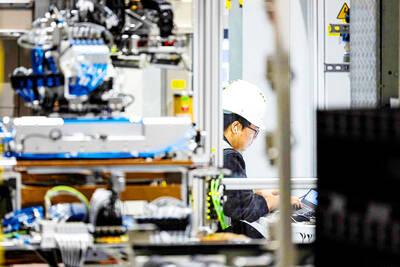US stocks are at the beginning of a bear market in which benchmark indexes may fall more than 30 percent, investor Marc Faber said.
Faber, managing director of Marc Faber Ltd and publisher of the Gloom, Boom & Doom Report, said losses in mortgage-backed bonds are not "contained or easily solvable" with interest rate cuts by the Federal Reserve. He predicted in an interview on Friday that the Dow Jones Industrial Average will drop below 12,000.
Faber said investors conditioned to buy stocks on dips helped push the indexes to records after sell-offs in February and June. Emerging markets are particularly vulnerable because investors have bought into them heavily, he said. The Morgan Stanley Capital International Emerging Markets Index has dropped 10 percent since climbing to a record on July 23, cutting its gain for the year to 15 percent.
Other investors said stocks will rebound because of profit growth. Second-quarter earnings for members of the Standard & Poor's 500 Index have climbed an average 10.9 percent among 452 companies that reported results, according to Bloomberg data.
"We are still very positive on the equity market," said Brian Stine, who helps oversee US$29 billion as investment strategist at Allegiant Asset Management in Cleveland. "The fundamentals haven't changed. Global growth should translate into earnings and higher stock prices."
The US Federal Reserve on Thursday added US$35 billion in temporary funds to the banking system, the most since at least July 2002, amid an increase in demand for cash from banks roiled by US subprime loan losses. Traders are speculating that the Federal Reserve will cut interest rates at an emergency meeting as soon as next week, according to Merrill Lynch & Co.
"I'm very critical of central banks," Faber said in an interview from Vancouver. "They may bail out the system, but there will be a cost, and the cost will be inflation."
Faber told investors to bail out of US stocks a week before the 1987 Black Monday crash, according to his Web site. He correctly predicted in May 2005 that stocks would make little headway that year. The S&P 500 gained 3 percent. He also told investors to buy gold in 2001, before it more than doubled.
On March 29, Faber said the emergence of home loan concerns meant the stock market was unlikely to benefit from the conditions that supported its rally since last June. The S&P 500 climbed 10 percent between then and July 19, when it reached a record, and has fallen 7.1 percent since then.
The blue-chip Dow gained 0.44 percent for the week to end Friday at 13,239.54, while the broad-market Standard & Poor's 500 rose a more substantial 1.44 percent over the week to 1,453.64.
The tech-rich NASDAQ composite increased 1.34 percent on the week to Friday to finish lower at 2,544.89.

CHIP RACE: Three years of overbroad export controls drove foreign competitors to pursue their own AI chips, and ‘cost US taxpayers billions of dollars,’ Nvidia said China has figured out the US strategy for allowing it to buy Nvidia Corp’s H200s and is rejecting the artificial intelligence (AI) chip in favor of domestically developed semiconductors, White House AI adviser David Sacks said, citing news reports. US President Donald Trump on Monday said that he would allow shipments of Nvidia’s H200 chips to China, part of an administration effort backed by Sacks to challenge Chinese tech champions such as Huawei Technologies Co (華為) by bringing US competition to their home market. On Friday, Sacks signaled that he was uncertain about whether that approach would work. “They’re rejecting our chips,” Sacks

It is challenging to build infrastructure in much of Europe. Constrained budgets and polarized politics tend to undermine long-term projects, forcing officials to react to emergencies rather than plan for the future. Not in Austria. Today, the country is to officially open its Koralmbahn tunnel, the 5.9 billion euro (US$6.9 billion) centerpiece of a groundbreaking new railway that will eventually run from Poland’s Baltic coast to the Adriatic Sea, transforming travel within Austria and positioning the Alpine nation at the forefront of logistics in Europe. “It is Austria’s biggest socio-economic experiment in over a century,” said Eric Kirschner, an economist at Graz-based Joanneum

BUBBLE? Only a handful of companies are seeing rapid revenue growth and higher valuations, and it is not enough to call the AI trend a transformation, an analyst said Artificial intelligence (AI) is entering a more challenging phase next year as companies move beyond experimentation and begin demanding clear financial returns from a technology that has delivered big gains to only a small group of early adopters, PricewaterhouseCoopers (PwC) Taiwan said yesterday. Most organizations have been able to justify AI investments through cost recovery or modest efficiency gains, but few have achieved meaningful revenue growth or long-term competitive advantage, the consultancy said in its 2026 AI Business Predictions report. This growing performance gap is forcing executives to reconsider how AI is deployed across their organizations, it said. “Many companies

France is developing domestic production of electric vehicle (EV) batteries with an eye on industrial independence, but Asian experts are proving key in launching operations. In the Verkor factory outside the northern city of Dunkirk, which was inaugurated on Thursday, foreign specialists, notably from South Korea and Malaysia, are training the local staff. Verkor is the third battery gigafactory to open in northern France in a region that has become known as “Battery Valley.” At the Automotive Energy Supply Corp (AESC) factory near the city of Douai, where production has been under way for several months, Chinese engineers and technicians supervise French recruits. “They